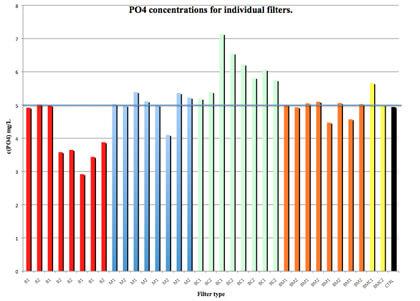In the context of an independent research study, I focused on the nutrient farming of Phosphorus (P) using the supporting case study of Shelburne Farms and its concerns with P levels found in runoff water from their dairy farm.
Phosphorus is one of the three primary macronutrients needed for plant growth with potassium (K) and nitrogen (N) and makes up about 0.2% of a plant's dry weight (Schachtman et al. 1998). However, in high concentrations P can be detrimental to the environment and have severe negative impacts such as eutrophication. This is an issue observed on Shelburne Farms during events of heavy rainfall.
An independent research study was therefore conducted in the context of the University of Vermont (UVM) with the intent of determining what bioremediation methods would succeed most in capturing the high levels of P found in runoff water with the dual purpose of reducing the impact on downstream watersheds and using the harvested nutrient as a fertilizer on fields and crops.
The research findings were promising. According to the research, mycelium has the ability to transport nutrients to and form point of interest; compost increases soil’s overall fertility by introducing new and more numerous microorganisms; and biochar increases the soil surface area to allow for a stronger microbial activity. It was therefore hypothesized that a system that included mycelium, biochar and compost would be most successful at uptaking P from dairy farm runoff.
A supporting experiment conducted in the context of a course at UVM was used as a reference to evaluate different methods and provide answers to the issue of P mining. The experiment consisted in creating systems that combined known-to-be-successful methods: biochar, mycelium and compost filtration. The experimental design included 5 filters: biochar alone, mycelium alone, biochar + mycelium, biochar + compost, and all three. A phosphorus solution of 5mg/L was run through the systems, the outflow was collected and tested for P concentrations.
Results were inconclusive. The hypothesis was rejected, as that system was not the most effective at removing P. Surprisingly, the biochar alone was the most effective and some systems such as those
including compost were found to add P to the final solution.
It was discussed that time was the most limiting factor in this experiment. Mycelium was only given 2 to 3 week to develop on the medium. The compost used had not reached complete maturity, therefore decreasing its potential at filtering P.
Promising alternate conclusions were drawn. First off, the mycelium was grown in an unsterile environment (to ensure best field representation and ensure reliability), which goes against conventional methodology. When systems were taken apart, mycelium had established territory meaning that it has growth potential competing against other organisms found in compost and biochar. It was also found that, of all systems containing mycelium, the system that showed most mycelium growth was the most successful at removing P. It was thus speculated that if mycelium was given more growth time, it could have yielded more promising results and further P removal.
The following table shows the final results of the experiment. It can be noticed that, of all systems, biochar was the most successful, with a maximum removal rate of near 50%.
Reference:
Schachtman, D. P., Reid, R.J. & Ayling S. M. (1998). Phosphorus Uptake by Plants: From Soil to Cell. Plant Physiology, vol. 116 no. 2 447-453.
